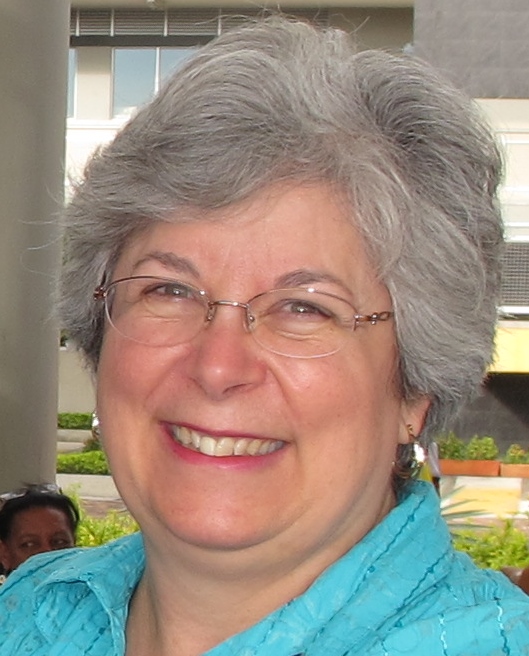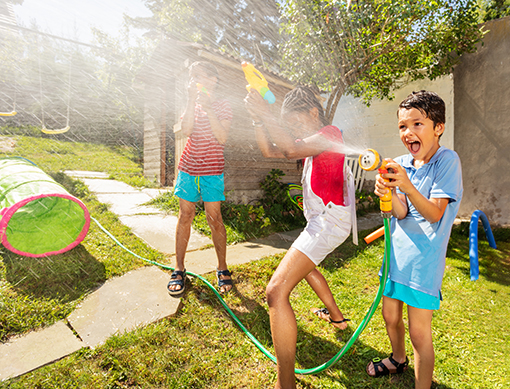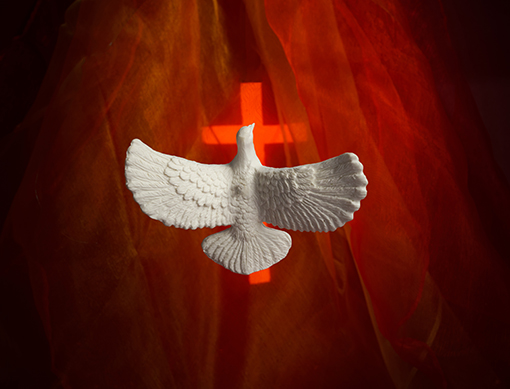When you take care of your body, you also nourish and heal your soul. In our religious tradition, we recognize the link between spiritual wellbeing and bodily health. Beyond our basic physical needs are the needs of the spirit. In Proverbs 17, we read, “A cheerful heart is a good medicine, but a downcast spirit dries up the bones.” In Sirach 30, we can find a program for guarding our health by promoting a cheerful outlook: “Do not give yourself over to sorrow, and do not afflict yourself deliberately. Gladness of heart is the life of man, and the rejoicing of a man is length of days.”
 Research supports the belief that our physical wellbeing and emotional wellbeing are in fact connected. The idea that laughter promotes good health first received widespread attention through Norman Cousins’ 1979 best-seller, Anatomy of an Illness. But centuries earlier astute observers had ascribed physical benefits to humor. Thomas Sydenham, a seventeenth-century British physician, once observed: ‘The arrival of a good clown into a village does more for its health than 20 asses laden with drugs.’”
Research supports the belief that our physical wellbeing and emotional wellbeing are in fact connected. The idea that laughter promotes good health first received widespread attention through Norman Cousins’ 1979 best-seller, Anatomy of an Illness. But centuries earlier astute observers had ascribed physical benefits to humor. Thomas Sydenham, a seventeenth-century British physician, once observed: ‘The arrival of a good clown into a village does more for its health than 20 asses laden with drugs.’”
Humor’s impact on actual healing has not been scientifically confirmed, but many people have experienced a benefit from laughter and a cheerful attitude. According to Lee Berk, M.D., and Stanley Tan, M.D., both of the Loma Linda School of Medicine, California, laughter “activates T lymphocytes and natural killer cells, both of which help destroy invading microorganisms. Laughter also increases production of immunity-boosting gamma interferon and speeds up the production of new immune cells. And it reduces levels of the stress hormone cortisol, which can weaken the immune response.”
Get together with some friends for a conversation about the health benefits of humor. Here is a discussion plan for your visit:
First, observe from your own experience,
- Ask yourself and a non-family member: What makes you laugh? What makes you “stress out”?
- What do you do to relieve stress?
- List ways a family member’s physical condition or emotional state affects the family.
- What do you do for fun? Play games? Cultivate hobbies? Read? Go to the movies? Hike? When did you last take the time to do one of these things?
- Have you ever witnessed someone who seemed to be healed by a cheerful heart?
Next, discern how to apply these insights to improve your health:
- How important is it to you to take care of your health?
- How are you prevented from doing things that you enjoy?
- Why is it important – and difficult -- to schedule personal fun time?
Possible actions you and your friends can take to improve your health:
- Create a library of books, movies and music that lift your spirits. Start a book club or movie night.
- Organize a walking group in your neighborhood or a fitness group in your parish.
- Get a physical checkup. Encourage those you love to do the same.
End your get-together in prayer: Lift up our hearts, O Lord, as we place our trust in you. Give us a Spirit of cheer, and make us joyful witnesses for you. We are filled with gratitude for your gifts to us. (Name what you are thankful for.) We pray also for the following intentions…. Amen.
 About the Author
About the AuthorDr. Lauri Przybysz specializes in equipping families to live their vocation to be domestic churches and signs of God’s love. Lauri received the Doctor of Ministry from the Catholic University of America, and she has been both a Catholic middle school religion teacher and a faith formation coordinator at the archdiocesan and parish levels. She is the mother of six children and grandmother of 21.
On a recent afternoon spent with family at a birthday barbecue, one of my young grandchildren stood next to me watching his siblings play cornhole. There was laughter, and hooting and hollering, from the aunts and uncles as four youngsters tried their best to land the bean bag in the hole.
 Out of the clear blue sky, the child next to me says, “I love summer.”
Out of the clear blue sky, the child next to me says, “I love summer.”
“Why is that?” I asked.
“Because there’s time,” he said matter-of-factly.
Sometimes we forget that adults are not the only ones aware of the dearth of time in our daily lives, the rush and demands of work and school, the seemingly endless car trips to activities, and for those who are raising medically fragile children, the repetitive visits to doctors and therapy, that suck the time out of every day.
Children are aware of the lack of time, and grateful when school is suddenly over and time opens up for them. But summer for adults doesn’t always hold the same freedom. There is no last day of work. Family responsibilities do not take a vacation.
Yet, having the mindset of summer can be helpful when we intentionally forge moments that allow us to benefit from the gifts of summer. The truth is time is always there. What differs are our decisions in how time will be used.
In doing some summer reading, I came across the reflection and prayer below, which can serve as a framework for how we might take the time we need this summer to grow ourselves. The quotes in italics were added by me for additional reflection.
Summer Activities
Take time to claim your strength; they are gifts of God.
“The future starts today, not tomorrow.” St. John Paul II
Take time to have fun; it's God's way of teaching you your strengths.
“Jesus, help me to simply my life by learning what you want me to be, and being that person.” St. Therese of Lisieux
Take time to grow yourself; only you can grow you.
“Have patience with all things, but first of all, with yourself.” St. Francis de Sales
Take time to trust yourself; God trusts you.
“The saints did not all begin well, but they ended well.” St. John Vianney
Take time to be self-reliant; it is better than being dependent.
“The secret to happiness is to live moment to moment, and to thank God for all he sends to us, day after day.” St. Gianna Molla
Take time to share with others; they will bless you, and you will bless them.
“Genuine love is demanding, but it’s beauty lies precisely in the demands it makes.” Pope Francis
Take time to have hope, you are a child of God.
“Is not Jesus pointing to children even as models for grownups?” St. John Paul II
Let's put ourselves into the hands of the Lord and pray that God will bless us and our families during the wonderful months of summer. May we all help make our home a place of relaxation, joy, love, peace and safety. May we be generous and considerate, not thinking only about ourselves, but helping others enjoy the blessings of summertime. Lord God, Creator of all things, guide our steps and strengthen our hearts, during these months of summer and vacation days. Grant us refreshment of mind and body. We ask this through Christ our Lord.
~ Found on: catholicdoors.com
 About the Author
About the AuthorMary Clifford Morrell, mother of six and grandmother to ten, is a Catholic journalist, editor, and author who has served the Dioceses of Metuchen and Trenton, New Jersey; Burlington, Vermont, and RENEW International in the areas of religious education and communication.
During the summer months, we have the chance to welcome guests and also to be the guests of others. Although these visits are accompanied by lots of preparation, cleaning and laundry, the good times overshadow the challenges involved. We share good and drink and tells stories with friends, new and old. In our faith tradition, extending and receiving hospitality is a holy act because God can use the occasion to be present in refreshing and healing ways.
 In Genesis 18, Abram and Sarai are blessed with son after their generous hospitality to three visitors who came to them by the oaks of Mamre. This episode provides the background for the New Testament command, “Do not neglect to show hospitality to strangers, for by doing that some have entertained angels without knowing it” (Hebrews 13:2).
In Genesis 18, Abram and Sarai are blessed with son after their generous hospitality to three visitors who came to them by the oaks of Mamre. This episode provides the background for the New Testament command, “Do not neglect to show hospitality to strangers, for by doing that some have entertained angels without knowing it” (Hebrews 13:2).
God is eager to join the party when people get together. For example:
- Elizabeth welcomes Mary for a momentous visitation at the beginning of her pregnancy – Luke 1: 39-35.
- Mary and Jesus keep the wedding feast at Cana going strong after the wine ran out – John 2: 1-11.
- Jesus picks up a towel and washes the feet of his disciples at the Last Supper – John 13: 3-11.
- When they get to Emmaus, the disciples invite Jesus to join them at table, and he reveals himself to them in the breaking of the bread – Luke 24: 13-35.
When people break bread together, or enjoy recreation or entertainment, they often grow to understand and appreciate each other better. Better working relationships and more effective communication are often fruits of hospitality.
Hospitality and the Eucharist. Pope John Paul II linked our reception of Christ in the Eucharist with hospitality: "Like the disciples of Emmaus, believers, supported by the living presence of the risen Christ, become in turn the traveling companions of their brothers and sisters in trouble, offering them the word that rekindles hospitality in their hearts. With them they break the bread of friendship, brotherhood, and mutual help" (Homily, June 2, 2000).
The early Christians understood the connection between receiving Christ in the Eucharist and sharing hospitality with others. In the Acts of the Apostles, we read that "they devoted themselves to the apostles' teaching and fellowship, to the breaking of bread and the prayers…. Day by day, attending the temple together and breaking bread in their homes, they partook of food with glad and generous hearts" (Acts 2:42, 46).
Bible Study Opportunity. The Acts of the Apostles is full of stories of hospitality. We see how the Gospel was spread throughout the ancient world because of people welcoming missionaries into their homes and listening to the Word of God they brought with them. Your students in grades 4-8 could work in pairs to discover and report on all the acts of hospitality found in this book.
For Reflection: Recall a time when someone went out of their way to be with you or help you. What attributes characterize a person who is ready at any time to welcome someone who is new to the class or neighborhood?
 About the Author
About the AuthorDr. Lauri Przybysz specializes in equipping families to live their vocation to be domestic churches and signs of God’s love. Lauri received the Doctor of Ministry from the Catholic University of America, and she has been both a Catholic middle school religion teacher and a faith formation coordinator at the archdiocesan and parish levels. She is the mother of six children and grandmother of 21.
Sitting on a bookshelf in my home office is a little stuffed animal that holds great memories for me – not from my childhood, or of my children or grandchildren, but from a retreat day I offered for catechists and teachers after school was out for the year.
 It was titled, “Summer Shepherds.”
It was titled, “Summer Shepherds.”
It was my practice to always put something related to the retreat title in the center of each round table where participants sat. I wracked my brains trying to come up with something engaging for this retreat but my usual dollar store visit wasn’t productive.
As I was losing hope and thinking I’d have to resort to simple candles and a basket of chocolates, I visited the local Christian bookstore. There, sitting on top of a large bin as I entered the doors was a little stuffed sheep with long, floppy felt legs, wearing sunglasses and flip flops with a towel flung over its shoulder. I couldn’t believe my eyes! Better still, the bin was full of them.
Of course, they cost much more than a dollar, but how could I not buy them?? They were custom made for this retreat. Summer sheep for summer shepherds!
During these few hours together, we learned more about the relationship between the shepherd and his or her sheep. It enabled us to get a better understanding of what it means to say, “The Lord is my Shepherd.”
We also discussed the different means of shepherding that happened in the summer, depending on where the shepherding takes place. In cold climates, shepherds lead their flocks to the best pastures during summer, to ensure plenty of grass and cool water. They build shelters and stay put to allow sheep to eat well and grow fat so they can get through the winter months.
For shepherds, summer is a time of building relationships with their sheep, which allows them to keep them safe from wolves. Sheep that are injured by wolves are often too afraid to move from their spot, but they will respond to the voice of the shepherd letting the shepherd know where they are so they can be rescued.
On a more serious note, we discussed how, as shepherds, religious educators walk in the footsteps of Jesus and need to nurture their own faith lives, something Jesus did, as well. A big part of his self-care was taking time away, and during that time entering into prayer and conversation with his Father.
While religious educators, whether teacher or catechist, are not often in contact with their students during the summer, except for a few weeks of summer programs, our retreat encouraged them to use the summer to build their own relationship with God.
We all agreed the summer is the time to be intentional about growing our own faith to ensure we can provide the best for our students once the fall, and the school year, comes around again.
Some of the suggestions which came from religious educators themselves included:
- Keeping a gratitude journal during the summer. This is particularly helpful when life is throwing challenge after challenge at you.
- Use the front porch or backyard as a place for prayer to grow in appreciation for God’s creation. This is wonderful exercise to do on vacation, whether you are near the ocean, a lake, camping or hiking.
- Add a visit to Mass during the week. Spend some time in the Adoration chapel if there is one.
- Visit a church that is not your own. Reflect on how its unique beauty is different from your church, and how it is the same as a place where the People of God worship. How do you find God there?
- Pray more often. As part of your prayer practice, tell God honestly what is keeping you from worship, from prayer, from trusting God, or anything else you feel is an impediment. Ask questions and then ask God to provide answers. They often come in the words and works of others. Stay open.
- Read. Most of the retreatants preferred actual books, rather than virtual or audio versions. For them, there is something about the ritual of choosing the book, holding the book and turning the pages that makes reading in this way impactful. Some chose to read more Scripture at least one day a week, others choose books on saints or other specifically religious pieces. Others decided to be intentional about reading books they’ve been planning to read but never got to, and to be mindful of the faith elements in the stories. How did God work in the lives of the characters?
- Everyone agreed to keep a copy of the Twenty-Third Psalm (The Lord is My Shepherd), provided in their folders, for daily reading and memorization. Many had it memorized already and acknowledged that praying it during difficult times was an assurance and comfort. Some reflected on one verse at a time to gain a better understanding their relationship with God. What does it mean to say, “I shall not want”?
- Everyone agreed that shepherds also needed to don sunglasses and flip-flops and throw a towel over their shoulder and enjoy some down time – another entry in the gratitude journal.
 About the Author
About the AuthorMary Clifford Morrell, mother of six and grandmother to ten, is a Catholic journalist, editor, and author who has served the Dioceses of Metuchen and Trenton, New Jersey; Burlington, Vermont, and RENEW International in the areas of religious education and communication.
As we approach summer vacation days, we teachers like to evaluate ourselves and devise ways to capitalize on our successes and amend our less-than-successful lessons. Revisiting our school year can break open a well of creativity for our teaching. We get new ideas. Even what seemed to be a flop in the classroom can be a source of inspiration for a better way to approach the lesson. Rather than being discouraged by remembering what did not work, we can benefit from the experience and learn new ways to get our message across in an engaging way.
 We can engage in a process of discernment that is not unlike the practice of the daily Examen, the practice of examining our lives each day and learn to recognize God’s will in the reality of the situation. Centuries ago, St. Ignatius of Loyola taught this to his missionary followers, and we can use it for our mission as catechists. Just as the daily Examen helps us keep our feet on the ground day-to-day, practicing clear-eyed evaluation and assessment of our teaching efforts makes for future growth and success. A reflective, Spirit-led review of the school year grounds our teaching efforts in concrete reality.
We can engage in a process of discernment that is not unlike the practice of the daily Examen, the practice of examining our lives each day and learn to recognize God’s will in the reality of the situation. Centuries ago, St. Ignatius of Loyola taught this to his missionary followers, and we can use it for our mission as catechists. Just as the daily Examen helps us keep our feet on the ground day-to-day, practicing clear-eyed evaluation and assessment of our teaching efforts makes for future growth and success. A reflective, Spirit-led review of the school year grounds our teaching efforts in concrete reality.
The definitive aim of catechesis is to put people not only in touch but in communion, in intimacy, with Jesus Christ. (On Catechesis in Our Time, 5). In other words, Christian discipleship is not just about what you know, but Who you know! Looking back of the school year, prayerfully consider how you accomplished goals you set for yourself last Fall. Reflect on how you can advance these goals in the coming school year:
Help children grow as persons.
- children of God who know who they are
- persons of character who know, want, do what is right
Help children grow closer to Christ.
- Develop a personal relationship with Jesus and his Father.
- Belong in a living community of Christians.
Help children grow as Catholics.
- Know the factual data that supports their faith.
- celebrate Eucharist and other sacraments meaningfully
- be committed members of a Catholic parish
If we are not intentional about inviting students to grow in their relationship with Jesus, they mistakenly begin to think that Catholicism and the Christian life are all about knowing a lot of religious information. Pope Francis teaches in The Joy of the Gospel: “On the lips of the catechist the first proclamation must ring out over and over: ‘Jesus Christ loves you; he gave his life to save you; and now he is living at your side every day to enlighten, strengthen and free you.’ (no. 164)
Bookmark Good Ideas. Our Faith Fuel Blog offers classroom-ready suggestions to enrich in your lesson plans. Explore the articles from the past school year. You will find the topics from each month archived here.
Teach the Daily Examen to Children. Disciples of any age can benefit from incorporating the Examen into their daily lives. Early in the school year, introduce your class to this traditional spiritual practice. Make time during the school week to recall everyone to reflect on their walk with Jesus.
 About the Author
About the AuthorDr. Lauri Przybysz specializes in equipping families to live their vocation to be domestic churches and signs of God’s love. Lauri received the Doctor of Ministry from the Catholic University of America, and she has been both a Catholic middle school religion teacher and a faith formation coordinator at the archdiocesan and parish levels. She is the mother of six children and grandmother of 21.
When you stop to think about it, it’s pretty amazing that the Christian faith, with more than 2 billion followers world-wide, is not only the largest religious tradition but got it’s start through the efforts of the 12 very ordinary men who were the original Apostles.
 Among them were a zealot, a tax collector, a thief and at least four, and maybe as many as seven fishermen.
Among them were a zealot, a tax collector, a thief and at least four, and maybe as many as seven fishermen.
Fishermen were not educated, but they were hard workers, dedicated to their livelihood and living much of their lives in their boats. They learned patience and developed the strength to deal with hard times, all things that would have been needed as followers of Jesus.
Jesus knew these men to their very souls. In spite of their times of frailty, misunderstanding, arguments and fear, Jesus knew they would flourish with the power of the Holy Spirit when the time came, and become, as Scripture says, “fishers of men.” And of this crew, Jesus chose Peter – not only a fisherman but the man who cut off the ear of the high priest’s servant in the Garden of Gethsemane, denied knowing Jesus when the rooster crowed and ran in fear – and made him the head of Jesus’ Church.
Jesus said to Peter, “… you are Peter, and upon this rock I will build my church, and the gates of the netherworld shall not prevail against it.
“I will give you the keys to the kingdom of heaven. Whatever you bind on earth shall be bound in heaven; and whatever you loose on earth shall be loosed in heaven.”
That’s a lot of responsibility for one person, especially one who is not by nature a preacher or teacher or builder of churches.
But Peter rose to the occasion, putting his faith in Jesus and the promises of the Father. He stands as an important inspiration for us and for our youth as to what’s possible when we trust in the will of God.
Some interesting facts about Peter to share with students:
- St. Peter’s symbols include a boat, a fish, a rooster, keys to Heaven and a severed ear. He is also depicted in paintings crucified on an upside down cross. Peter did not feel worthy to be crucified in the manner of Christ, so he asked to hang upside down.
- St. Peter is the first pope and is often shown in images wearing papal robes in the color red, which is the color which signifies a martyr.
- Through the power of the Holy Spirit, St. Peter the fisherman preached to thousands of people on the day of Pentecost and 3,000 people were baptized into the Church. This day is known as the birthday of the Church.
- St. Peter had a bad temper and was quick to get angry, which is probably why Jesus had to heal the ear of the High Priest’s servant when Peter got angry and cut it off when the Jewish authorities came to arrest Jesus in the Garden of Gethsemane.
- St. Peter first met Jesus while listening to a sermon by John the Baptist. Immediately, Peter knew Jesus was the Messiah.
- St. Peter’s name was Simon Peter, but Jesus often called him Cephas, which in Aramaic means “rock.”
- St. Peter always asked questions, so he could understand what Jesus was teaching the Apostles. He was curious, outspoken, assertive and loyal to Jesus. He always asked for clarification, an important quality for any student.
A reflection for teachers: “… there is a path in Peter’s life that can illuminate the path of our own. The Lord granted him many graces and freed him from evil: he does this with us too. Indeed, often we go to him only in moments of need, to ask for help. But God sees farther and invites us to go further, to seek not only his gifts, but to seek him, who is the Lord of all gifts; to entrust to him not only our problems, but to entrust our life to him” (Pope Francis, Solemnity of the Holy Apostles Peter and Paul, June 29, 2020).
 About the Author
About the AuthorMary Clifford Morrell, mother of six and grandmother to ten, is a Catholic journalist, editor, and author who has served the Dioceses of Metuchen and Trenton, New Jersey; Burlington, Vermont, and RENEW International in the areas of religious education and communication.
Ordinary – it’s a word that implies “nothing special,” “commonplace,” having no distinctive features.
 When we talk about Ordinary Time of the liturgical year in the Church, we may think of it as a time when nothing special is going on in between the beautiful and meaningful seasons of Advent and Christmas, Lent and Easter.
When we talk about Ordinary Time of the liturgical year in the Church, we may think of it as a time when nothing special is going on in between the beautiful and meaningful seasons of Advent and Christmas, Lent and Easter.
Nothing could be further from the truth.
While the special seasons of the Church include such important events as the Incarnation, Jesus’ death on the Cross, Jesus’ Resurrection and Ascension, and the coming of the Holy Spirit at Pentecost, Ordinary Time allows us to journey with Jesus as his life unfolds.
There is nothing ordinary about that.
The United States Conference of Catholic Bishop’s describes Ordinary Time as “a time for growth and maturation, a time in which the mystery of Christ is called to penetrate ever more deeply into history until all things are finally caught up in Christ.”
As adults, we may have an understanding of what that means, but how can we impart such a complex concept to students?
Start with the small things. Children learn quickly that there can be no big things without the small things. Whether working with numbers or Legos or magnetic tiles, it’s visually obvious that the first small piece is needed in order to make something big.
It’s like that in religious education as well. With young children we start with something they understand – love – and repeatedly remind them that God loves them. Of course, love is not really a small thing or an ordinary thing, but it is a first thing if children are to grow into adults who want to know and love God, and to come to understand how each step in Jesus’ daily life, each decision, each person he met, each hour of prayer, led him to those important events that we remember, honor and celebrate during Christmas and Easter.
How can Ordinary Time be included in the classroom?
Begin with the color green – The liturgical color for Ordinary time is green. With younger students who cannot yet grasp the meaning of ordinary, changing colors on the prayer table or classroom displays can help them understand that this time in our faith life (when we try to get to know Jesus better) is a time of growth, like the flowers and plants of spring. Nature is a wonderful teacher for growing faith. Also, keep a liturgical color calendar in your classroom. It serves as a visible reminder to students that there are distinct seasons in the life of the Church.
Rewrite a chapter in Jesus’ life – Choose one of your favorite stories about Jesus from the Gospels, read it with the students, and then ask them how Jesus’ life, and the life of those in the story, might have changed if that event hadn’t happened. Bring the discussion back to the significance of the event, what it has taught millions of people since then, how it has been one of the building blocks of our faith. Following Jesus during Ordinary time helps us to build our faith.
Remind students they are disciples – Ordinary time is an opportunity to become familiar with the life of the Apostles, the first disciples, as they accompanied Jesus for three years on his mission. They were ordinary men, with distinct personalities, strengths and weaknesses. They were chosen by God for a purpose and made an extraordinary difference for the world to come. The calling of the Apostles appears in all four Gospels. Read, with or for students, Matthew 4:18-22, Mark 1:14-20, Luke 5:1-11, and John 1:35-51. Allow students to discuss their own strengths and weaknesses and ways in which they can use them to do great things for God.
For Teachers: For those who wish to gain a better sense of who the Apostles were, I enjoyed “Twelve Ordinary Men” by John MacArthur. MacArthur writes about the Apostles from known facts in the Bible, provides additional information from church tradition, and focuses on their character qualities. Ordinary time is the perfect time to consider the extraordinary possibilities of ordinary people.
To read more about liturgical year and seasons of the Church visit Liturgical Year and Calendar | USCCB.
 About the Author
About the AuthorMary Clifford Morrell, mother of six and grandmother to ten, is a Catholic journalist, editor, and author who has served the Dioceses of Metuchen and Trenton, New Jersey; Burlington, Vermont, and RENEW International in the areas of religious education and communication.
At the end of the Easter Season, we celebrate Pentecost, the birthday of the Church. On that day, the Holy Spirit descended on the apostles and transformed them into courageous witnesses to the Gospel, the Good News that mankind is not lost. God has entered into suffering humanity and taking it upon Himself has brought the good of our salvation out of the evil of His death on the cross. Sin and death no longer have the final word.
 Mary, Mother of the Church. Mary was with the disciples when the Holy Spirit descended at Pentecost. By God’s design, Mary is crucial to the birth and growth of the Church. As she supported the first disciples with her presence and prayers, so now she supports us in the same way. If we seek to be a faithful and lively Church, we can rely on Mary’s directions to the wine servers at Cana: “Do whatever he tells you.”
Mary, Mother of the Church. Mary was with the disciples when the Holy Spirit descended at Pentecost. By God’s design, Mary is crucial to the birth and growth of the Church. As she supported the first disciples with her presence and prayers, so now she supports us in the same way. If we seek to be a faithful and lively Church, we can rely on Mary’s directions to the wine servers at Cana: “Do whatever he tells you.”
Sent Out to Tell the Good News. Remember that the Holy Spirit came upon the apostles while they were gathered in a home. They received the courage to immediately go out into the town to tell others about Jesus. When we gather at church for worship at Mass, then we are sent out to tell others about God’s saving love, to “announce the Gospel with our lives.” What are some ways we can announce the Gospel by our actions?
Members of One Body. We experience ourselves as Church within our parish communities. Aim to foster your students’ involvement in their local parish. "The parish is where the Church lives. Parishes are communities of faith, of action, and of hope. They are where the Gospel is proclaimed and celebrated, where believers are formed and sent to renew the earth. Parishes are the place where God's people meet Jesus in word and sacrament and come in touch with the source of the Church's life." (Communities of Salt and Light, p. 1)
The Church Prays and Celebrates. Prepare students to more fruitfully participate their parishes’ liturgical life. The second chapter of every unit of Blest Are We Faith in Action centers on How Catholics Worship. Share the Liturgy Background found in your teacher guide, as well as the Liturgy Connection throughout the units. Be sure to emphasize the Church’s feasts and seasons using the liturgical calendar in the Resources section.
Our World-wide Church. The Church enjoys the many cultural expressions of its members. We bring our own styles of music, customs, decorations into our local church building and events. Explore the places that were homes to the saints in the interactive map here.
Evidence of the Spirit’s Presence. Ask students: Where do you see signs that Holy Spirit is at work today? What will you look for? Consider events at school, at home, in the neighborhood, and at church. Write down your observations, including the location and situation. Illustrate one of the events you witnessed.
 About the Author
About the AuthorDr. Lauri Przybysz specializes in equipping families to live their vocation to be domestic churches and signs of God’s love. Lauri received the Doctor of Ministry from the Catholic University of America, and she has been both a Catholic middle school religion teacher and a faith formation coordinator at the archdiocesan and parish levels. She is the mother of six children and grandmother of 21.
The word vocation has a broad meaning and is often misunderstood, but at its core it is a call. The Second Vatican Council defines vocation as the “universal call to holiness” that is in the heart of every human being. This call is an invitation from God to love others and to love God. The distinct way you live out that love is your vocation. Every vocation is a religious vocation because God does the calling.
 God extends a personal invitation to each of us. “Vocation,” according to Pope Francis in his exhortation Christus Vivit, “has nothing to do with inventing ourselves or creating ourselves out of nothing. It has to do with finding our true selves in the light of God and letting our lives flourish and bear fruit.”
God extends a personal invitation to each of us. “Vocation,” according to Pope Francis in his exhortation Christus Vivit, “has nothing to do with inventing ourselves or creating ourselves out of nothing. It has to do with finding our true selves in the light of God and letting our lives flourish and bear fruit.”
Qualities for Vocations. Explore the “Growing in Virtue” segments found in each chapter in your Family Life program. Also, look up “virtues” in your Blest Are We Faith in Action and Be My Disciples program books. Explain to students that virtues are qualities we can develop to help us live our universal vocation, our call to holiness.
Flowing from Baptism. The ministry of lay Catholics, whether formally instituted by the church or simply inspired by the Holy Spirit to serve the needs of others, flows from baptism and a recognition that every Christian is called to take part in the mission of the church. As Pope Francis said, "All ministries are an expression of the sole mission of the church, and they are all forms of service to others."
Marriage and Holy Orders and More. Only two of many vocational choices are numbered among the seven sacraments. While married life, priesthood, and the deaconate are indeed essential vocations, someone could also be called to serve God in single or consecrated life.
Called to Be Catechists. Some Catholics are lectors, acolytes and catechists. These church ministries, volunteer or professional, do not require ordination. Invite a lay minister to visit your class and speak about why they have answered this calling. Catechists help their students find joy in learning, encounter Christ, and listen to the promptings of the Holy Spirit to discover their passions and use their talents for service. In these ways, you help them discern and live out their future vocations.
Equipped to Serve. Brainstorm vocations with students and include occupations that are not directly church-related, such as healthcare, technology, ecology, transportation, art, music, public safety, or farming. What skills do those in these professions need? How does a person’s faith impact how do their chosen work?
Discerning Gifts and Talents. In a spirit of prayer, ask your students to look into their hearts and examine the joys and strengths they find there. Help students begin to see how their interests can be the beginnings of a calling from God for future development. How could they use those joys and strengths in service to the world and the church. For example, if someone loves swimming, how could they put that gift to use for others? If someone enjoys hiking, where would that serve other people?
 About the Author
About the AuthorDr. Lauri Przybysz specializes in equipping families to live their vocation to be domestic churches and signs of God’s love. Lauri received the Doctor of Ministry from the Catholic University of America, and she has been both a Catholic middle school religion teacher and a faith formation coordinator at the archdiocesan and parish levels. She is the mother of six children and grandmother of 21.
Product Highlight
Family Life Second Edition
Family Life Second Edition is the newly updated edition of RCL Benziger's leading K-8 supplemental program that addresses key concerns of today's Catholic families. Family Life includes child safety education in every grade level, promotes virtuous living, and strengthens Catholic identity.
The Family Life program reinforces the Catholic virtues and values that your students attain with their education. Family Life is essential to your school-based religious education program and meets Social and Emotional Learning (SEL) standards and benchmarks.
“We are an Easter People!”
 That phrase was used by St. Pope John Paul II to describe the People of God, filled with joy and faith because of Christ’s Resurrection.
That phrase was used by St. Pope John Paul II to describe the People of God, filled with joy and faith because of Christ’s Resurrection.
If we follow what happens to the Apostles and the Church after the Resurrection, we could also exclaim, “We are a Pentecost People!” That means we are a people powered by the Holy Spirit.
In a Pentecost Sunday homily, Pope Francis reminded the faithful that on Pentecost, the Holy Spirit transformed “timid disciples from fearful men, ‘huddled behind closed doors,’ to bold men who ‘bear witness to [Jesus]’.”
He was describing what happened following Jesus’ Resurrection, when the Apostles were often behind locked doors, afraid of the Jewish authorities. It was here that Jesus appeared to them for the first time.
During the next forty days, though Jesus continued to appear to them, some of the Apostles went back to their old lives as fisherman. On one occasion, Jesus appeared and told them not to leave Jerusalem but to wait for “the promise of the Father,” which Jesus had spoken about.
I often wondered if he got wind of some of them planning to leave town!
It was after the Apostles witnessed Jesus’ Ascension that things began to change. They gathered together in the Upper Room, with Mary and some other women, to pray. They probably remembered Jesus’ promise that the Holy Spirit would come after Jesus went back to his Father.
It was then that the Holy Spirit arrived in wind and tongues of flame, transforming the ordinary disciples of Christ into bold, courageous proclaimers of the Gospel. On that day, Peter, once a fisherman with no higher education, the Apostle who, motivated by fear, denied he even knew Jesus after Jesus was arrested, rose to his feet and preached with the power of the Holy Spirit and 3,000 people were baptized. The Church was born.
While many lessons on Pentecost focus on the images of wind and flames and the color red, all of which are meaningful, I believe that the story of Pentecost can encourage today’s youth to have faith in the transforming power of the Holy Spirit.
In another Pentecost Sunday homily Pope Francis stresses that the Holy Spirit “sets our lives in order. He teaches us to accept one another, to forgive one another and to forgive ourselves; he teaches us to be reconciled with the past. And to set out anew.”
Teaching Pentecost in the classroom:
Your RCL Benziger grade-level texts will have excellent, valuable lessons on Pentecost. For middle school students and older, consider adding a conversation on transformation to the lesson. Be sure to include the story of Peter’s transformation.
• Can people change what’s in their hearts and minds? How does that happen? Has that ever happened to you or someone you know? How do you think the Holy Spirit, the third person in the Holy Trinity, can help you accept one another, forgive one another, forgive yourself, reconcile with past hurts and mistakes, and start out fresh?
• Add this brief prayer from Pope Francis as you begin each day: ‘Come, Holy Spirit, come into my heart, come into my day.’
For Teachers: Wisdom from two saints. In his own message for Pentecost Sunday 2001, St. Pope John Paul II shared the words of St. John XXIII about the power of the Holy Spirit. – "The light of the Holy Spirit breaks forth from the first words of the Book of the Acts of the Apostles.... The intense movement of the divine Spirit precedes and accompanies the evangelizers and breaks into the souls of those who listen, while extending the confines of the Catholic Church to the ends of the earth, allowing her to traverse all the centuries of history" (Discorsi Messaggi Colloqui del S. Padre Giovanni XXIII, II, p. 398).
 About the Author
About the AuthorMary Clifford Morrell, mother of six and grandmother to ten, is a Catholic journalist, editor, and author who has served the Dioceses of Metuchen and Trenton, New Jersey; Burlington, Vermont, and RENEW International in the areas of religious education and communication.
Pagination
Latest
Categories
Archives
- February 2015 (2)
- March 2015 (2)
- April 2015 (5)
- May 2015 (3)
- June 2015 (6)
- July 2015 (3)
- August 2015 (5)
- September 2015 (5)
- October 2015 (4)
- November 2015 (2)
- December 2015 (1)
- February 2016 (2)
- March 2016 (1)
- April 2016 (2)
- May 2016 (2)
- July 2016 (2)
- August 2016 (2)
- September 2016 (1)
- October 2016 (5)
- November 2016 (1)
- December 2016 (3)
- January 2017 (2)
- February 2017 (3)
- March 2017 (2)
- April 2017 (1)
- June 2017 (2)
- July 2017 (2)
- August 2017 (1)
- April 2018 (1)
- October 2018 (2)
- December 2018 (2)
- February 2019 (3)
- March 2019 (2)
- April 2019 (2)
- May 2019 (3)
- June 2019 (1)
- July 2019 (16)
- August 2019 (8)
- March 2020 (4)
- April 2020 (6)
- May 2020 (8)
- June 2020 (7)
- July 2020 (5)
- August 2020 (7)
- September 2020 (4)
- October 2020 (5)
- November 2020 (9)
- December 2020 (11)
- January 2021 (10)
- February 2021 (8)
- March 2021 (5)
- April 2021 (4)
- May 2021 (4)
- June 2021 (5)
- July 2021 (2)
- August 2021 (3)
- September 2021 (4)
- October 2021 (4)
- November 2021 (2)
- December 2021 (5)
- January 2022 (4)
- February 2022 (4)
- March 2022 (9)
- April 2022 (7)
- May 2022 (9)
- June 2022 (12)
- July 2022 (7)
- August 2022 (10)
- September 2022 (9)
- October 2022 (11)
- November 2022 (8)
- December 2022 (7)
- January 2023 (2)
- February 2023 (10)
- March 2023 (9)
- April 2023 (10)
- May 2023 (8)
- June 2023 (4)
- July 2023 (3)
- August 2023 (2)
